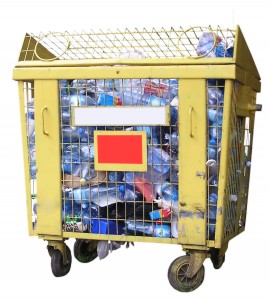More Americans than ever can recycle plastic. Are they?


Came across a study this afternoon from Moore Recycling Associates, a consultant in the recycling industry, that suggests approximately 94 percent of the U.S. population has access to recycling programs that can handle plastic bottles.
That amount apparently is up about 14 percent from "previous years" (although the organization doesn't define that gap). In the 100 biggest cities, access to recycle plastic containers has almost doubled, according to the findings. The study was sponsored by the American Chemistry Council along with the Sustainable Packaging Coalition.
When you're talking about things like yogurt cups, dairy tubs and lids, and other plastics, the programs that can handle those items are far fewer: Maybe 40 percent of the population has access to recycling resources for those items, according to the study.
Said Steve Russell, vice president of plastics for the American Chemistry Council:
"The next step is to increase awareness, so that more people take advantage of this opportunity to do something good for our environment and for the businesses that depend on this valuable material."
Russell is referring to companies that have begun to used recycled plastics in items including t-shirts, backyard decks, storage containers, car parts, decorative moldings and so on. Apparently, their are all sorts of reincarnation possibilities for plastics. The trick, though, is for people to figure out what is recyclable and how. I know that I personally still puzzle over this, especially when I'm peering at the number on the bottom of plastic containers. Here are three tips released with the survey:
- You should actually put the caps back on bottles, because they can be recycled, too.
- Don't forget frozen food trays or produce containers
- Many grocery and retail stores have programs for handling clean, dry plastic bags and wraps. That includes sealable and non-sealable food storage bags.
So does access to recycling resources mean that the average American human is taking advantage of same? Late in 2010, the American Chemistry Council and the Association of Postconsumer Plastic Recyclers figured that approximately 2.5 billion pounds of plastic bottles were collected in 2009, which was up 2 percent. I read elsewhere that the recycling rate is somewhere around 28 percent of the total disseminated, but can't find independent verification of that. I did, however, find some information on recycling rates for non-bottle rigid plastics.
I love that the infrastructure is in place, or at least more infrastructure, for helping businesses deliver on their sustainability promises. But we are still falling short on awareness of the "how," from the consumer point of view.
This post was originally published on Smartplanet.com